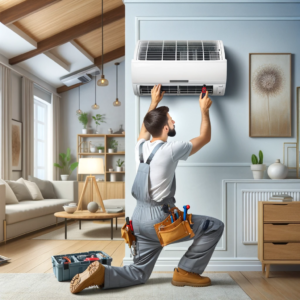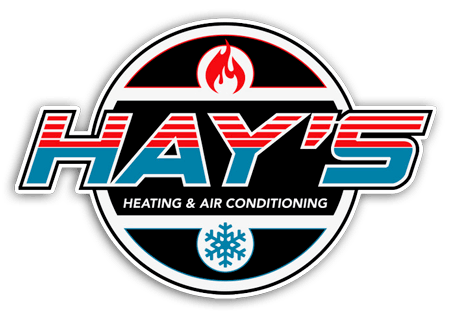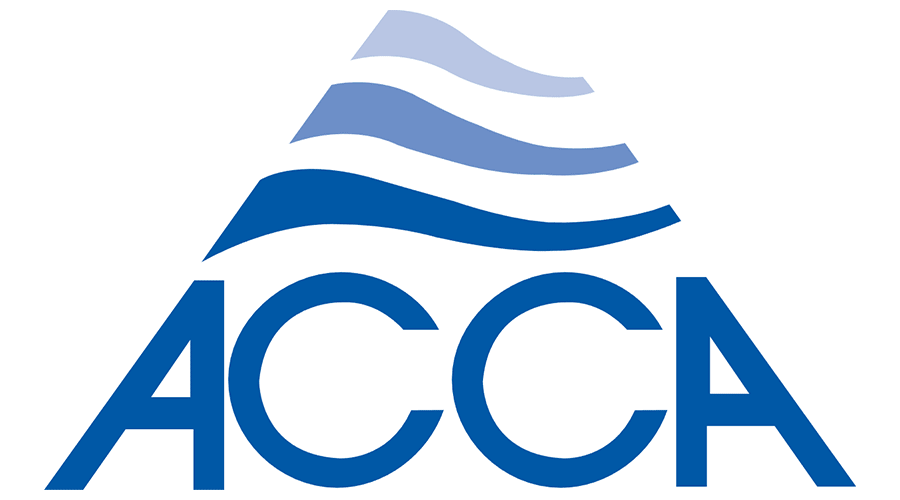Selecting the right air conditioning (AC) system is more than a matter of comfort; it’s about making an informed decision that aligns with your lifestyle, space, and budget. With various options on the market, understanding each system’s nuances can help you navigate your choices more effectively. Here’s a closer look at the most common AC systems, their workings, benefits, challenges, and costs.
Understanding AC Systems: Basics You Should Know
Central to understanding AC systems is grasping two critical metrics: BTUs (British Thermal Units) and SEER (Seasonal Energy Efficiency Ratio). BTUs measure the amount of heat an AC unit can remove from a room per hour, while SEER ratings indicate the energy efficiency of an AC system over an average cooling season. A higher SEER rating means greater energy efficiency and lower operational costs.
Types of AC Systems
Central Air Conditioning
How It Works: A central AC system utilizes a network of ducts and vents to distribute cooled air throughout a home or building. It consists of an outdoor unit (housing the compressor and condenser) and an indoor unit (usually connected to a furnace or air handler), which work together to extract heat from indoor air, cool it, and circulate it back into the space.
- Pros:
- Efficient Cooling: Ideal for cooling multiple rooms or large spaces evenly.
- Air Quality Improvement: Equipped with filters that reduce airborne particles, improving indoor air quality.
- Integrated Solutions: Can often be combined with heating systems for year-round comfort.
- Cons:
- Higher Initial Cost: The cost of installation can be steep, especially if ductwork needs to be added or updated.
- Space Requirements: Requires sufficient space for the installation of both indoor and outdoor units, as well as ductwork.
- Cost Estimate: Installation costs typically range from $3,000 to $7,000, but can increase significantly with extensive ductwork modifications. Operational costs depend on the system’s efficiency, the cooling load, and local energy rates.
Ductless Mini-Split Systems
Overview: Ductless mini-split systems feature an outdoor compressor unit connected to one or more indoor air-handling units via small conduits. Each indoor unit is equipped with its own thermostat, allowing for precise temperature control in different zones or rooms.
- Pros:
- Flexible Installation: Without the need for ductwork, these systems offer more flexibility in placement and are ideal for older buildings, additions, or specific cooling needs.
- Energy Efficiency: Mini-splits have no ducts, which eliminates the energy losses associated with ductwork of central forced air systems. This can translate to substantial savings on energy bills.
- Individual Zone Control: Allows for different temperature settings in each room, enhancing comfort and further reducing energy consumption.
- Cons:
- Aesthetic Considerations: Indoor units are visible within the living space, which may not appeal to everyone.
- Higher Upfront Costs: The initial cost per cooling zone can be higher than traditional central AC systems, particularly if multiple indoor units are required.
- Cost Estimate: Initial installation ranges from $2,000 to $14,500, varying with the number of indoor units and the system’s capacity. While upfront costs are higher, the increased efficiency can lead to lower operational costs over time.
Window Units
Functionality: Window AC units are compact, self-contained systems designed to fit within a window frame. They’re a popular choice for cooling single rooms or small spaces.
- Pros:
- Affordability: Among the most cost-effective cooling solutions, both in terms of initial purchase and installation.
- Ease of Installation: Can be installed by the homeowner without the need for professional help, avoiding installation fees.
- Portability: Can be removed and stored during cooler months, freeing up window space and extending the unit’s life.
- Cons:
- Limited Cooling Capacity: Most effective in cooling single rooms; not suitable for whole-house cooling.
- Obstructed Views and Noise: Can be unsightly and block natural light. Older models can be quite noisy, potentially disrupting indoor environments.
- Cost Estimate: Prices range from $150 to $500, making window units an affordable option for those on a tight budget. Energy costs vary by model efficiency, usage patterns, and electricity rates.
Portable Air Conditioners
Operation: Portable air conditioners are freestanding units that can be moved from room to room. They vent hot air through a hose that’s typically directed out of a window. These units are versatile, requiring no permanent installation.
- Pros:
- Flexibility: Can be easily moved to where cooling is needed, making them ideal for homes without central air or for cooling spaces on an as-needed basis.
- No Installation: Apart from setting up the vent hose, these units require no installation, offering a quick and easy cooling solution.
- Renters’ Solution: Because they don’t require permanent installation, portable ACs are suitable for rental properties or for people who move frequently.
- Cons:
- Space and Noise: Takes up floor space and can be louder than built-in systems, which might be inconvenient in smaller living areas.
- Efficiency: Generally less efficient than other types of AC systems, leading to higher operational costs for the same amount of cooling.
- Cost Estimate: With prices ranging from $200 to $700, portable air conditioners offer a relatively inexpensive upfront cost. However, the trade-off is in their efficiency, which can lead to higher energy bills, especially in hot climates or during peak summer months.
Hybrid/Dual Fuel Systems
Explanation: These innovative systems combine an electric heat pump (which provides efficient cooling and heating) with a traditional gas furnace. The system automatically switches between the two energy sources based on external temperatures, optimizing efficiency and comfort.
- Pros:
- Year-Round Comfort: Provides efficient cooling in the summer and warm, cost-effective heating in the winter, especially in regions with wide temperature ranges.
- Energy Savings: By utilizing the most efficient energy source based on temperature, hybrid systems can offer significant savings on utility bills.
- Environmental Impact: Reduces reliance on fossil fuels, contributing to lower carbon emissions.
- Cons:
- Higher Initial Cost: The upfront cost of purchasing and installing a hybrid system can be higher than other heating and cooling options.
- Complexity: Requires an understanding of both systems for maintenance and ac repair, potentially leading to higher service costs.
- Cost Estimate: Initial costs can range from $2,500 to $10,000, varying widely based on system size and installation complexity. Despite the higher upfront cost, the long-term savings on energy bills and the environmental benefits can be considerable.
Geothermal Heating and Cooling
Description: Utilizing the stable temperatures found just below the Earth’s surface, geothermal systems circulate water or refrigerant through underground pipes to cool and heat homes efficiently.
- Pros:
- Unmatched Efficiency: With stable underground temperatures, geothermal systems offer unparalleled energy efficiency, significantly reducing cooling and heating costs.
- Longevity and Reliability: These systems have fewer moving parts and are protected from outdoor elements, resulting in a lifespan that can exceed 25 years for indoor components and over 50 years for the ground loop.
- Eco-Friendly: By leveraging the Earth’s natural temperatures, geothermal systems have a minimal environmental footprint.
- Cons:
- High Installation Cost: The initial investment is significant, largely due to the cost of installing the underground loop system.
- Land Requirements: Installation requires sufficient land for the ground loop, making it less feasible for properties with limited outdoor space.
- Cost Estimate: While the initial setup cost can range from $10,000 to $20,000 or more, the long-term savings are substantial, with drastically reduced operating costs and potential tax incentives or rebates.
Selecting the Right AC System for Your Home
When choosing an AC system, consider your space, climate, and energy efficiency needs alongside your budget. A professional HVAC assessment can provide valuable insights into the most suitable system size and type for your specific situation, ensuring optimal comfort and efficiency.
If you’re looking for AC installation or AC replacement in Durham County, NC, then call Hay’s Heating and Air Conditioning. We’ve got your back!
Conclusion
The choice of an AC system is a significant decision that affects not only your immediate comfort but also your long-term energy consumption and costs. By understanding the different systems available, their pros and cons, and the associated costs, you can make an informed decision that meets your needs and preferences. Whether you opt for the traditional efficiency of a central air system, the flexible cooling of a mini-split, or the innovative technology of a geothermal setup, the right AC system can provide you with years of comfortable, efficient, and reliable climate control.









